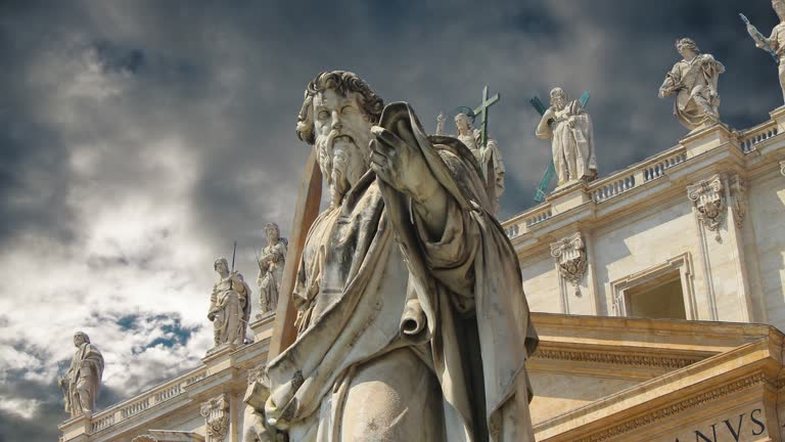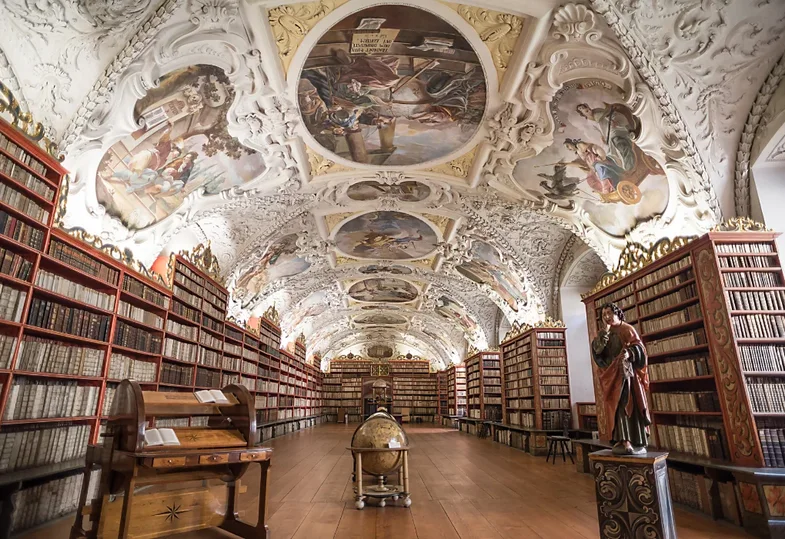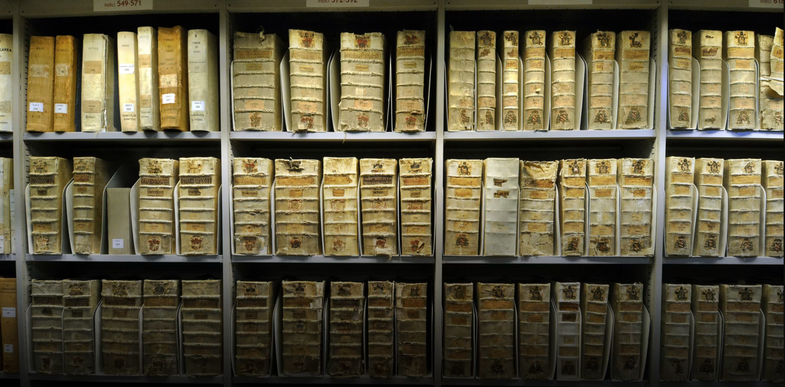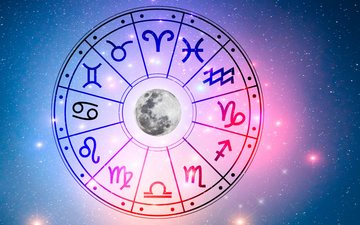
The Vatican, the world's smallest independent state, is the spiritual and administrative heart of the Catholic Church. Within its borders lie architectural marvels such as St. Peter's Basilica, the Sistine Chapel and the Vatican Museums, but there is also a more mysterious aspect to this holy city-state - legends that speak of hidden treasures buried deep within its interior.

It's not just about gold coins or precious stones, but about a collection of ancient artifacts, manuscripts, and secrets that could change the way we understand history, religion, and humanity itself.
The Mystery of the Vatican
For centuries, the Vatican has been shrouded in mystery. As the seat of the papacy, it has amassed untold wealth through donations, conquests, and the faithful. Some of this wealth is visible in its art collections and religious relics, but rumors say the true wealth is greater than meets the eye.

The curiosity begins with the Vatican Library and its secret archives. Founded in the 15th century, the library houses tens of thousands of manuscripts, some of which date back over 2,000 years. These texts are said to contain important information, forbidden texts, and documents that contradict the way history has been “served” to us. According to some theories, these archives also hold maps that lead to ancient treasures, relics of early Christianity, and even evidence of the existence of extraterrestrial life.

What treasures can be hidden?
The mystery of the treasures hidden in the Vatican can be divided into three main categories: spiritual artifacts, historical documents, and material wealth.
Spiritual Artifacts: Legends say that the Vatican houses objects of extraordinary spiritual value. These include the Holy Grail, the Ark of the Covenant, and relics of saints that can inspire faith, or fear. Some claim that even the spear that pierced Jesus on the cross is in the Vatican's treasury.
Historical Documents: The Vatican's secret archives are said to contain writings that challenge traditional history. From true accounts of the Knights Templar to the secret teachings of Jesus, these documents could rewrite entire chapters of human history. Some speculate that the archives contain letters between early popes and figures like Leonardo da Vinci, Galileo, and even kings of ancient civilizations.

Pasuri materiale: Si qendër ku janë sjellë dhurata fetare dhe plaçka lufte, Vatikanit i atribuohen thesare me ar, gurë të çmuar dhe artefakte të rralla të grumbulluara gjatë shekujve. Gjatë Kryqëzatave, për shembull, besohet se u sollën thesare nga Jeruzalemi dhe Kostandinopoja për t’u ruajtur në Vatikan. Disa mendojnë se këto gjenden të fshehura në katakombet nëntokësore apo në dhoma sekrete.
Legjenda dhe teori
Shumë rrëfime e ushqejnë mitin për thesaret e fshehura të Vatikanit. Njëra ndër to përmend një dhomë të fshehtë nën Bazilikën e Shën Pjetrit, që mendohet se përmban pasuri të grabitura nga Tempulli i Dytë i Jerusalemit gjatë pushtimit romak në vitin 70 të erës sonë. Kjo dhomë, e njohur si “Thesari i Tempullit,” besohet se ruan Menorahun, enë të shenjta dhe dorëshkrime me vlerë të madhe fetare.
Një tjetër teori ka të bëjë me dokumentet e humbura të Kalorësve Templarë. Si një urdhër ushtarak i krishterë, Templarët ishin të njohur për pasuritë dhe dijen që supozohet se zbuluan gjatë qëndrimit në Tokën e Shenjtë. Kur u shpërbënë në shekullin XIV, disa besojnë se thesaret dhe sekretet e tyre ranë në duart e Vatikanit.

Natyra sekrete e Vatikanit
Pikërisht fshehtësia e Vatikanit i jep jetë këtyre spekulimeve. Qasja në arkivat sekrete është shumë e kufizuar, e rezervuar vetëm për studiues të kualifikuar dhe klerikë, dhe madje edhe ata mund të kenë qasje vetëm në dokumente të caktuara. Katakombet nëntokësore të Vatikanit janë ende të paarritshme për shumicën e botës, duke lënë të hapur pyetjen: çfarë fshihet aty?
Kjo rezervë nuk është pa arsye. Vatikanit i është besuar ruajtja e besimit dhe e objekteve që, nëse bien në duar të gabuara, mund të trondisin sistemet fetare apo politike. Megjithatë, kritikët argumentojnë se kjo fshehtësi i mohon njerëzimit të drejtën për të kuptuar historinë dhe trashëgiminë e vet të vërtetë.
Gjuetia për thesare: fakt apo fantazi?
Edhe pse ideja e thesareve të fshehura në Vatikan mbetet intriguese, provat për ekzistencën e tyre janë kryesisht tërthorazi. Sceptikët argumentojnë se Vatikanit nuk i mungon as pasuria dhe as ndikimi, përse do t’i duhej të fshihte diçka?
Megjithatë, historia na mëson se institucionet shpesh fshehin informacion ose objekte për t’i mbrojtur, për të ruajtur kontrollin apo nga frika e keqpërdorimit. Pavarësisht mungesës së provave konkrete, teoritë dhe kureshtja nuk kanë rreshtur kurrë.
Çfarë e bën tërheqëse legjendën e thesareve të Vatikanit nuk është vetëm ideja e pasurisë, por ajo që simbolizojnë: misterin e besimit, lidhjen mes fesë dhe historisë dhe kërkimin e pandërprerë të së vërtetës nga njerëzimi.
Si vendi më i vogël në botë, Vatikani ka një ndikim të jashtëzakonshëm në jetën e miliona njerëzve. Thesaret e tij, qofshin të vërteta apo të imagjinuara, pasqyrojnë kompleksitetin e një vendi që është njëkohësisht strehë shpirtërore dhe rojtar sekretesh.
Will the truth about its hidden treasures ever be revealed? That is unknown. But one thing is certain: the Vatican will continue to fascinate generations to come.
Dictionary:
Artifacts – objects created by human hands, usually of historical, cultural, or religious significance; often found in archaeological excavations.
The Holy Grail – a legendary object, often described as the cup used by Jesus at the Last Supper. According to myth, it has supernatural powers and has been sought for centuries by knights and adventurers.
Ark of the Covenant – a sacred box according to Jewish tradition, where the tablets with the Ten Commandments were kept. It was said to be a sign of God's presence and a symbol of the covenant with the people of Israel.
Knights Templar – military and religious order founded in the 12th century, known for protecting pilgrims in the Holy Land and for the wealth, power, and mysteries surrounding them.
Holy Land – the region that includes parts of Israel, Palestine, Jordan, and other surrounding countries, of particular importance to Judaism, Christianity, and Islam.
Crusades – military campaigns organized by European Christians between the 11th and 13th centuries, with the aim of reclaiming the Holy Land from Muslim control.
Catacombs – underground galleries that were often used as burial places in ancient times; in the Vatican, they are part of the mysteries containing relics and perhaps hidden treasures.
The Second Temple of Jerusalem – the temple rebuilt by the Jews after their return from exile in Babylon; it was destroyed by the Romans in 70 AD and has a powerful symbolism in religious history.
Menorah – a seven-branched candelabrum that represents one of the oldest symbols of Judaism. It was used in the Temple in Jerusalem and is still the state symbol of Israel.





